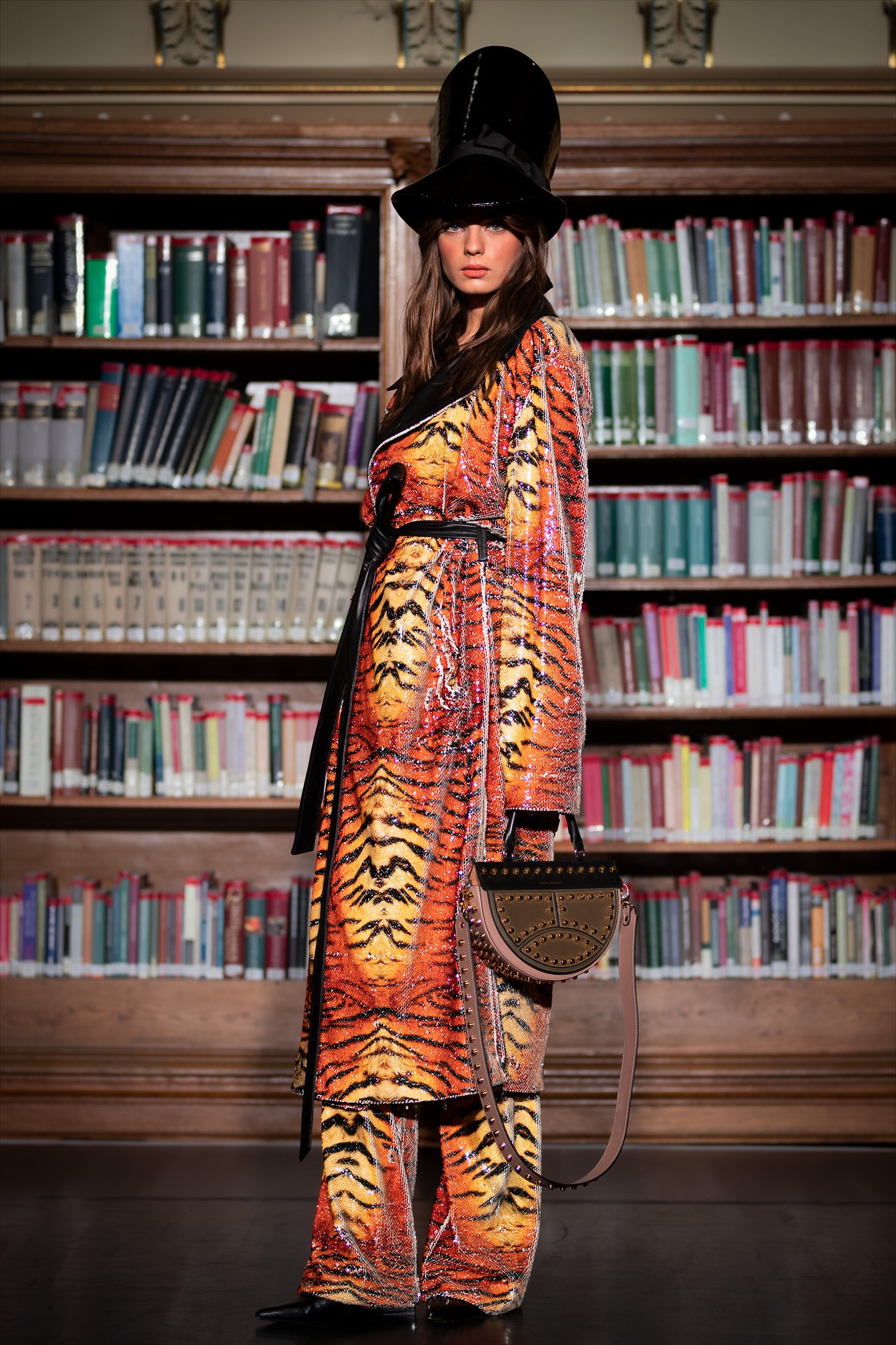It is good to clarify that "the best" is always subjective. No matter how well documented and backed up by an enthusiastic team of professionals, it is still the "best" label decided in the mood of a particular immersion event.
The topic was researched and explained in detail by László Barabási-Albert in his book
The Formula.
Backed up with this preamble, please welcome my top list of this year's Hungarian fashion week's highlights, which can also be considered my weekend's report.
The Best Venue
The big change of this year's
BCEFW was that instead of the previous single-location runway parade, the central programme of the fashion week was held in four different venues in Budapest. The designer brands could prepare for it with presentation formats adapted to their individual image.
Among the diverse cultural spaces, there were contemporary architectural feats (Hungarian National Dance Theatre at Millenáris and Museum of Ethnography in the neighbourhood of City Park) and some reverent objects of the traditions and the past (Hungarian National Museum in Kálvin Square and ELTE University Library and Archives in Ferenciek Square).
Photo: MTI/Balogh Zoltán
I've been planning a fashion shoot in an imposing library space for at least six years, so this was the combination I was most looking forward to, but it didn't become my favourite.
I continue to find it exciting and important to combine dressing and reading for an exceptional aesthetic experience. While we can experience the similarities of the two different segments as they provide a continuous imprint of human development, we can also wonder
that both produce treasure and rubbish, and are thus not only important cultural but also social intermediaries of human history.
However, thanks to the sun shining in the bitter cold of February, the new-build spaces with large windows were the clear winners for me.
Photo: MTI/Balogh Zoltán
The competition was close between the Dance Theatre and the Museum of Ethnography.
In the foyer of the Dance Theatre, the mid-morning sunlight shining through the glass walls warmed our souls and soothed the biting cold outside; in the neutral, terraced space of the Museum of Ethnography on the upper level, the energy of the big letters FASHION was even more amazing.

Photo
: Joon Kim, @joon_filmlab
The most favourite choreography
The fact that the models mastered twenty different choreographies for four different locations is an achievement in itself, so much so that I am awarding the best model prize to all of them this time.
Presumably there was also a lot of improvisation, for which the young team deserves even more credit.
Staircases, we know, are the most dangerous category, especially when you have to walk down the stairs in endless dresses and unfamiliar high-heeled shoes; fashion week was full of them.
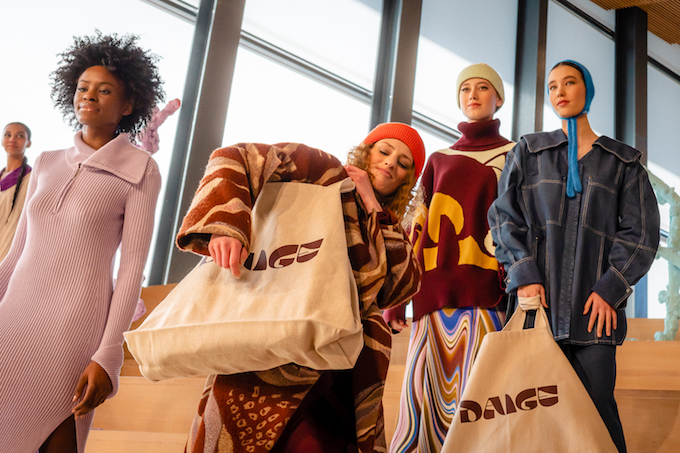
 Photo: Joon Kim, @joon_filmlab
Photo: Joon Kim, @joon_filmlab
The acrobatics of the Dance Theatre's staircase were maxed out by
DAIGE's star guest, dancer Bea Egyed, but she couldn't create the stumbling thrills of reality, what the narrow, metallic spiral staircases of the ELTE University Library building caused.
However, the winner in my category,
which brings the models out of their roles and into the real world, was TOMCSANYI's Chair Game.
Just look at these faces!
Photo: Joon Kim, @joon_filmlab
What a great idea to take models, whose whole role is to make faceless faces, out of their professional comfort zone and send them out to compete. Because
TOMCSANYI's chair-taking game turned into a real competition as the girls taking their chairs to the music that stopped them started to actually "fight". Not only did the energy of the game push them out of their model roles, we were also carried away by the atmosphere: we were in the betting with a bunch of random Italian guests to see who we would pick as the winner.
With each round, a girl would be left without a chair, and then she would take a chair, leave the circle and sit down among the spectators.
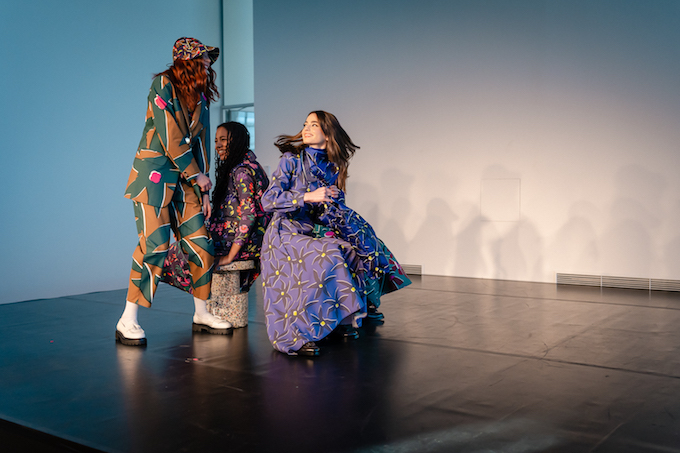 Photo: Joon Kim, @joon_filmlab
Photo: Joon Kim, @joon_filmlab
By the end there were two girls left, the two that my Italian colleague and I had picked as the winners, he one and I the other, and when the music stopped the two girls sat down on the last chair at the same time. So although none of us won the 100 euros that had been set as a bet on the go, we were all the richer for the experience and the new friendships we had made.
The most surprising guest
I love it when people from outside of fashion show that you can go in and out of this medium, and that dressing is something that everyone has to do with.
Most of all the ones who deny it.
I've already mentioned the surprise guest of
DAIGE, who dressed up as a fashion performance, playing and tumbling on the stairs.
The only male model of
ARTISTA deserves a mention, who, in the role of dresser, showed off the trio's versatile wearable outfits on himself and the models. Then, in a nod to its name, the brand surprised the slightly tired audience with a game of circus tricks.
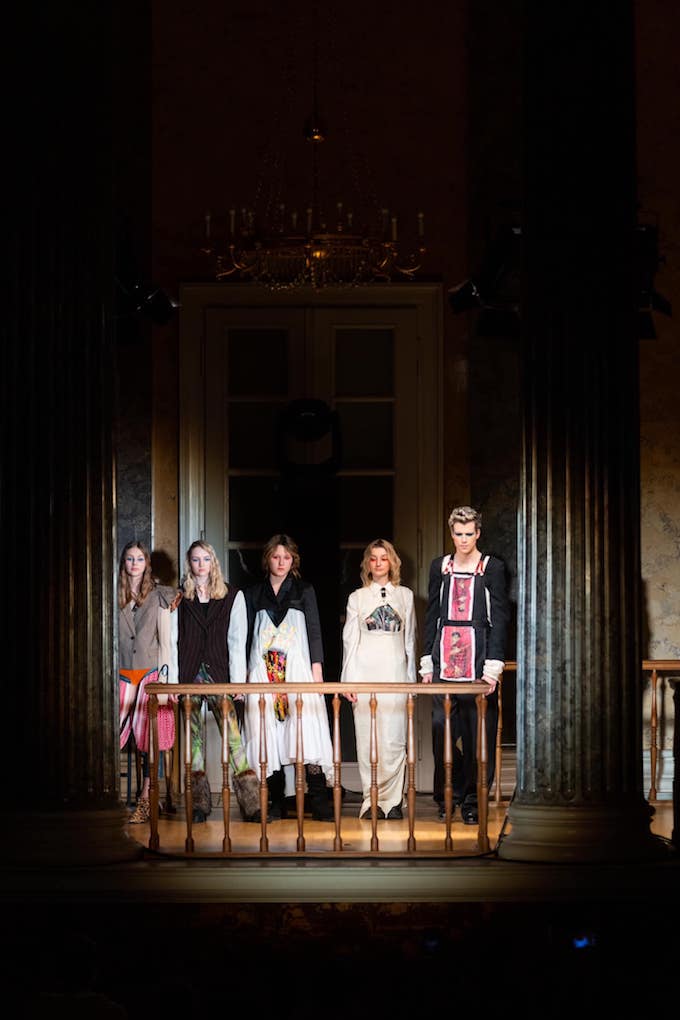
Ph
oto: The Sparkle Content
Elysian led off the story with a beautiful ballroom dance showcasing the brand's new collection.
Photo: The Sparkle Content
The biggest star-studded line-up was the
SentimentsCouture show that closed the fashion week: musicians, singers, well-known actresses (Janka Kopek, Zsófia Szamosi, Petra Gubik, Henrietta Edvi) and the fashion house's iconic model, Zita Mészáros.
 Janka Kopek
Janka Kopek Photo: The Sparkle Content
The most astonishing moment was caused by
ABODI: when a straw puppet suddenly moved in the Szekler atmosphere of the Hungarian National Museum, mixed with UNISUS mythology, many of us stopped taking breath. By evoking the Transylvanian carnival folk traditions, the designer pays homage to his family's homeland, mixing the importance of tradition with the possibilities of ultramodern fashion.
 Photo: The Sparkle Content
Photo: The Sparkle Content
The biggest surprise, however, was brought by
MERO, who wanted to be so sure that they prepared two star guests for the boudoir party atmosphere. Eszter Ráskó, in her huge tulle dress, brought a fantastic presence with a contrasting mix of stand-up comedy and dressing up, but even she was outdone by the pole-dancer. Her performance, slightly sacrilegious, but certainly unusual in the space of the Hungarian National Museum, woke up the tired, sedulous audience.
Despite the above mentioned stairs, I would give her the riskiest category, too. When the dancer wearing her latex catwoman outfit and platform boots hopped onto the temporarily placed, barely fixed pole, it moved back and forth with the sway of a balloon wing in a light breeze. The dancer, however, was not in the least disturbed. Her professionalism carried us away, so much that we came out of our exhaustion screaming with new life in the rows of the audience.
The most beautiful coat
I'll write separately about the collections and the individual pieces, but here is a falling in love story that I can't pass by without saying something.
Talking about Autumn/Winter collections, there were coats in good numbers and Hungarian designers should be particularly famous for their coats, it so good and unique what they do.
ARTISTA's art-inspired, versatile, wearable art pieces, CUKOVY's high end feathered coats, Katti Zoób's classic lines are all ultra-coveted items for women's wardrobes.
Talking about Kerényi Virág's spectacular outfits, we are begging for the bags, too.
But the first love was
Dóra Abodi's mirrored coats.
How brilliant has she been to combine folk mirror motives with her own patch-stitched leather coats!
My fresh fashion friend, Gordana has also set herself a new life goal by starting to save up for a jacket like this.
Photo: The Sparkle Content
For me, however, the collection of the RAD DUET on the next day overruled everything, and I fell in love with this beauty.
Photo: The Sparkle Content
Quoting from the Polish brand's
Instagram page:
"Here we present a pea-green velvet coat laminated with foil, fully embroidered with patterns inspired by crystals from the Irena glassworks. Hand-made eyewear made of resin, also in the form of a crystal, was used as an accessory.
The coat, divided into parts reminiscent of flower petals, finished with hemmed edges, perforated with leathercraft eyelets, and connected with a waxed cord. The coat and glasses refer to our beloved 70s with their construction."
It is not expected to explain love, and this is not a question of blindness, let me excuse myself with my Polish roots and argue with my seventies birth, that
this coat is me.
_______
Photos:
MTI/Balogh Zoltán
Joon Kim, @joon_filmlab
HFDA/The Sparkle Content

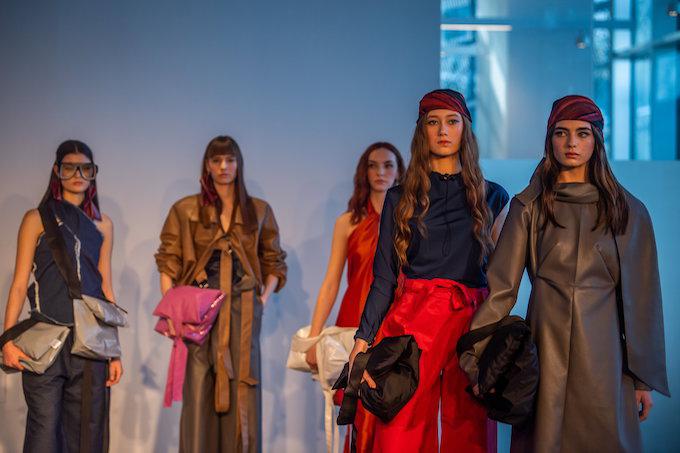


 Photo: Joon Kim, @joon_filmlab
Photo: Joon Kim, @joon_filmlab
 Photo: Joon Kim, @joon_filmlab
Photo: Joon Kim, @joon_filmlab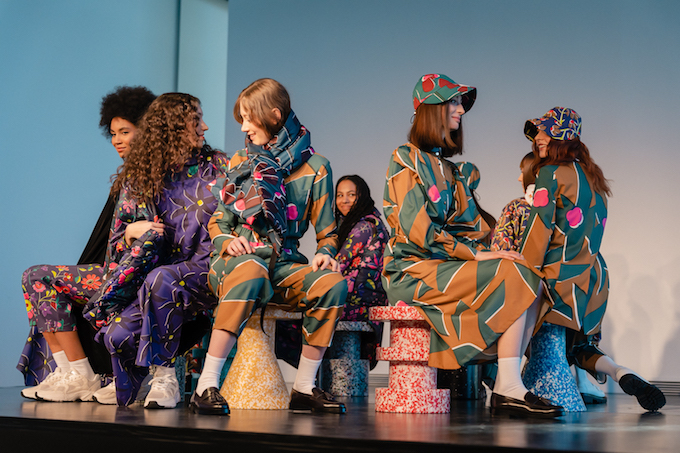
 Photo: Joon Kim, @joon_filmlab
Photo: Joon Kim, @joon_filmlab  Photo: The Sparkle Content
Photo: The Sparkle Content
 Janka Kopek
Janka Kopek  Photo: The Sparkle Content
Photo: The Sparkle Content
